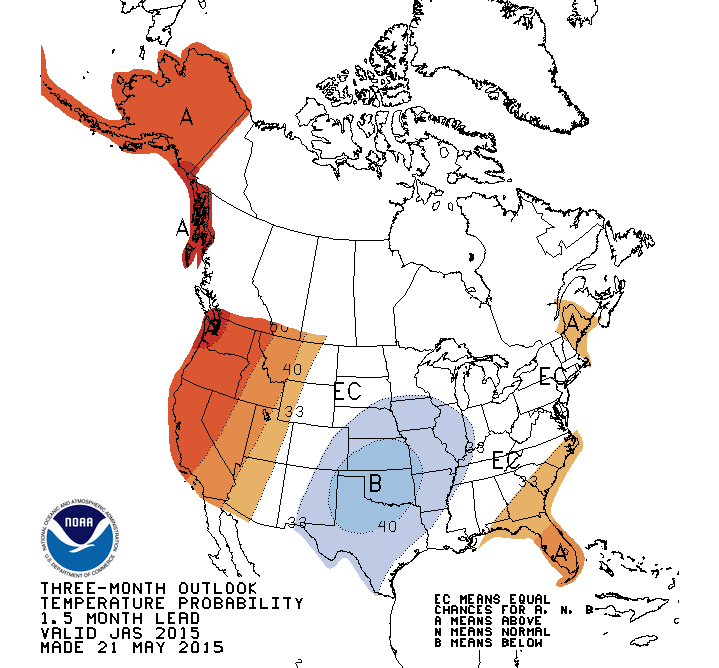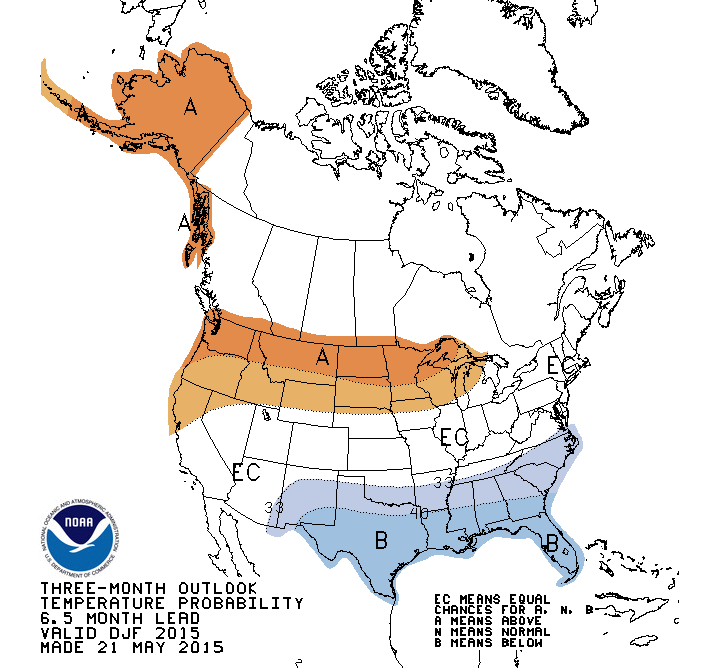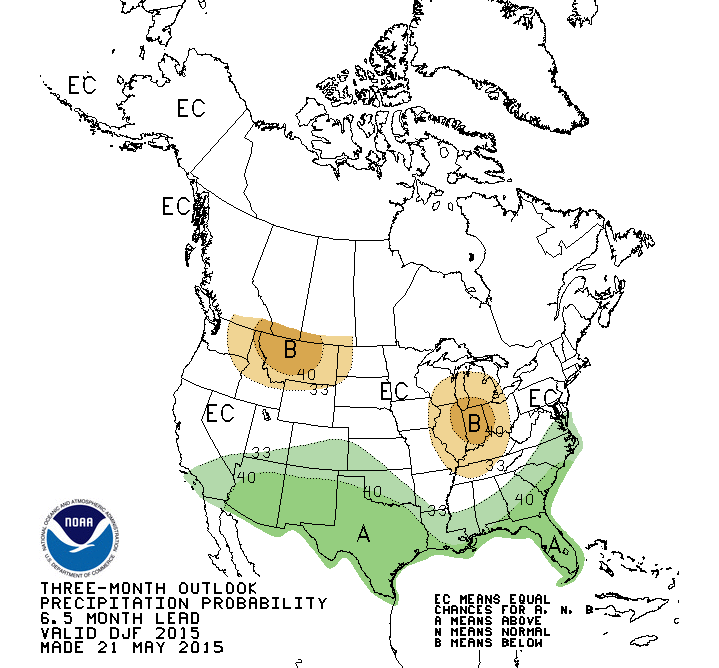In early May 2015, the Climate Prediction Center reported that weak to moderate El Niño conditions were present in the Pacific Ocean basin, along the equator. Furthermore, there is a greater 90% chance it will continue through summer and a greater than 80% chance it will last through 2015.
Now that El Niño has arrived, it’s influence on the NWS climate outlooks released last Thursday is considerable. For June (first figure, top row), the Southern Plains are expected to have an increased chance of cooler-than-average temperatures. A large part of the US is expected to have an increased chance of wetter-than-average precipitation, including portions of the southern and western Corn Belt.
For the period June-August (first figure, second row), the increased chance for cooler-than-average conditions stretches northward and eastward and includes all of Kansas and Missouri, southern Nebraska and Iowa, and far western Illinois. The increased chance for wetter-than-average conditions covers about the same area as for June.
Later forecasts for July-September, August-October, and September-November show in increased chance of cooler-than-average that expands across Iowa and Illinois (see second figure below for the July-September temperatures). Meanwhile, the area with an increased chance of wetter-than-average conditions contracts westward, leaving the Corn Belt with equal chances (EC) of above-, below-, or near-average precipitation in the late summer and fall time frame.
Finally, the forecast for December-February shows that the northern states from the West Coast to the Great Lakes have an increased chance of warmer-than-average conditions (see third figure below). There is an increased chance for drier-than-average conditions across Illinois, Indiana, most of Kentucky, southern Wisconsin and Michigan, and western Ohio (last figure).
You can see the full suite of monthly and seasonal forecast maps at the NWS Climate Prediction Center website: http://www.cpc.ncep.noaa.gov/






